Constraint-Based Daily Practice
This week I did 7 days of a constraint-based daily practice and I interviewed my first expert, Gregory Dobler.
Constraint Based Daily Practice
The main idea of a constraint-based daily practice is to challenge ourselves to explore our topic by making some kind of quick sketch or janky prototype every day for 7 days.
My topic is light pollution. A major cause of light pollution is outdoor lighting that emits light skyward because of light sources that are not shielded. A typical bare light source will emit light in all directions. Light that is emitted straight up into the sky rarely serves any purpose but contributes to the light pollution that prevents us from seeing the stars. Putting a cover of some kind above a light source can keep this from happening without noticeably diminishing its usefulness.
It happens I have 7 light sources (lamps, etc) in my apartment that partially illuminate the ceiling. It doesn't do me any good to illuminate the ceiling because I don't do anything up there. Is it possible for me to modify each light source so that I can continue to use the them without illuminating the ceiling and without inhibiting my ability to live there? Experimenting with this will help me understand how much of an impact proper lighting design can have on reducing light sources that emit light skyward and contribute to light pollution.
So to be clear, my goal is to modify each of the 7 light sources in my apartment so that each light's contribution to the illumination of the ceiling above or around it is minimized as much as possible without reducing the illumination so much that interferes with my ability to live in my apartment.
To be scientific I used a light meter app installed on my phone to take before and after illumination measurements. Illuminance is a measure of how much light is illuminating a surface. All measurements are in Lux (lx), with 10 lx equal to 1 foot-candle. One foot-candle is the illumination provided by 1 candle on a surface 1 foot way.
Every other light source in my apartment was turned off while taking any measurements. All lights were modified using cardboard, packing tape and masking tape. All modifications were extremely janky.
Day 1
My first light source is a standing lamp in my bedroom with a 100 Watt incandescent bulb. The lamp illuminates the ceiling above it at 34 lx and is reduced to 4 lx with the modifications. This modification took quite a bit of time because it was my first one.
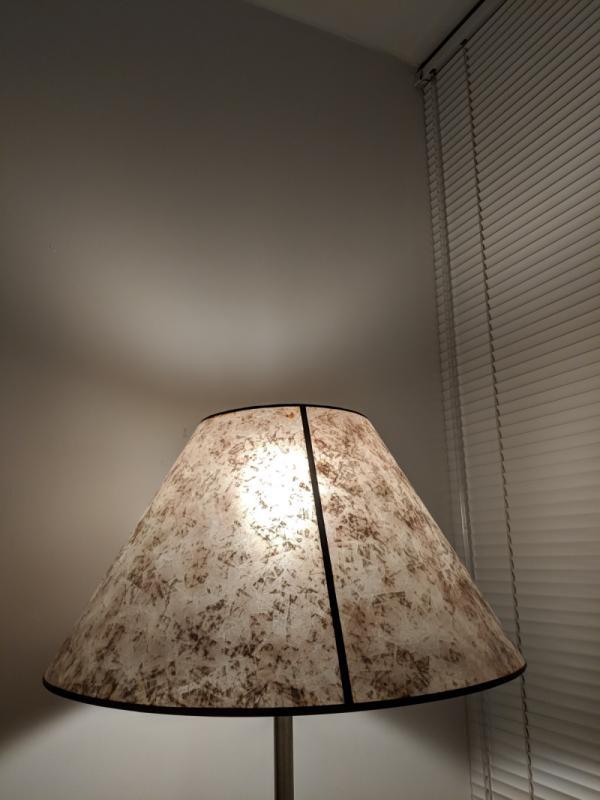
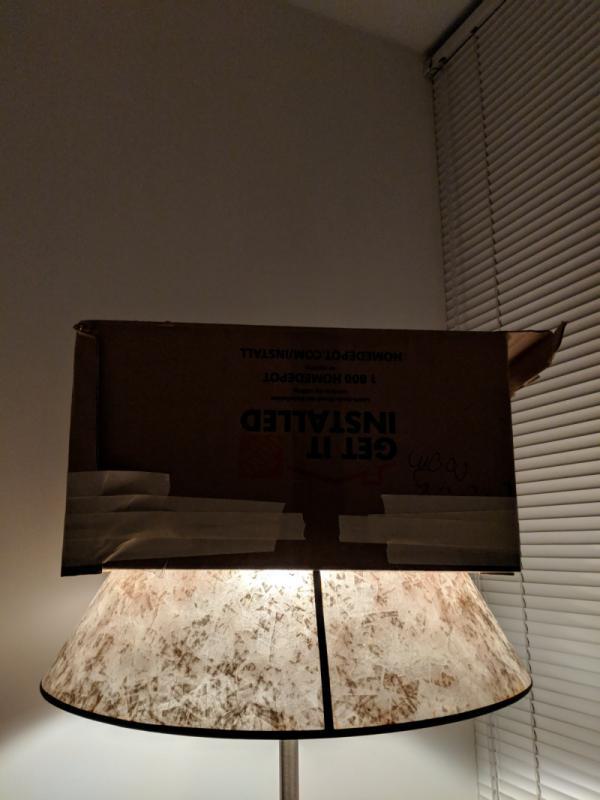
Day 2
The second light source is what I believe to be a LED light with plastic cover on the ceiling near my front door. For this light I measured the illumination of the ceiling around the outside of the lamp about 6-12 inches away. The previous ceiling illumination of 70 lx was reduced to 8 lx.
This was the most difficult because I had to securely tape cardboard to the ceiling with masking tape.

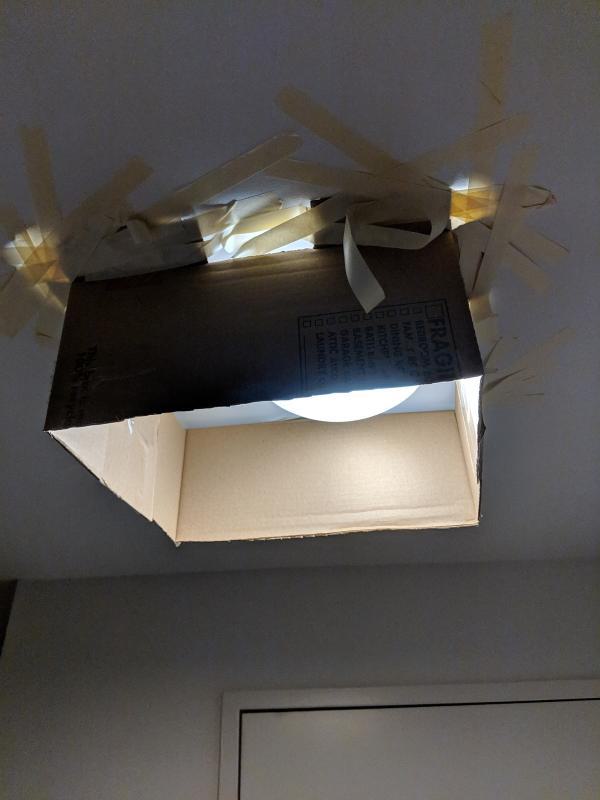
Day 3
The third light source is a 70 Watt incandescent bulb in my bedroom. The ceiling illumination was previously 36 lx and was reduced to 4 lx with the modifications.


Day 4
The fourth light source is the fluorescent lighting in my bathroom. This light illuminates the ceiling at 788 lx. With a simple cardboard cover I was able to reduce that to 46 lx.

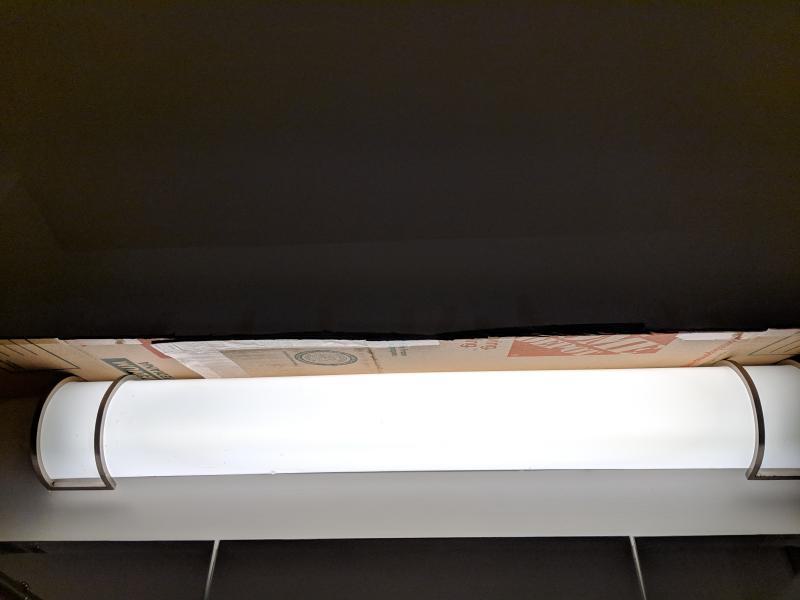
Unfortunately this modification fell down after a day or two. I made a second modification for it on day 6. This modified light illuminated the ceiling at 73 lx.
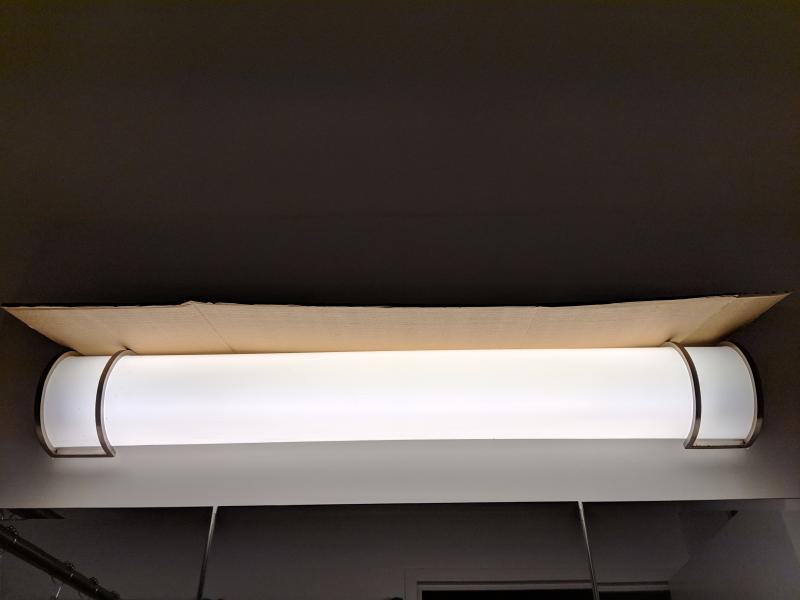
Day 5
The fifth light source is a 100 Watt incandescent bulb in my living room. This is a lamp I made myself out of an empty olive bottle several years ago as part of an ITP Camp project. The lamp illuminates the ceiling at 34 lx, but with the modifications, 3 lx.
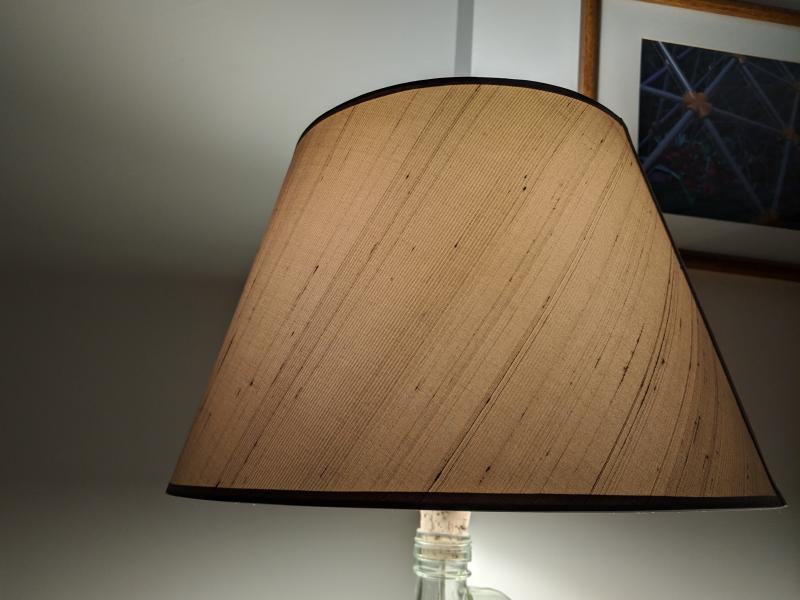

Day 6
The sixth light source is fluorescent lighting on the ceiling of my kitchen. The illumination of the ceiling 6-12 inches away from the light was 110 lx before the modification and 19 lx after.
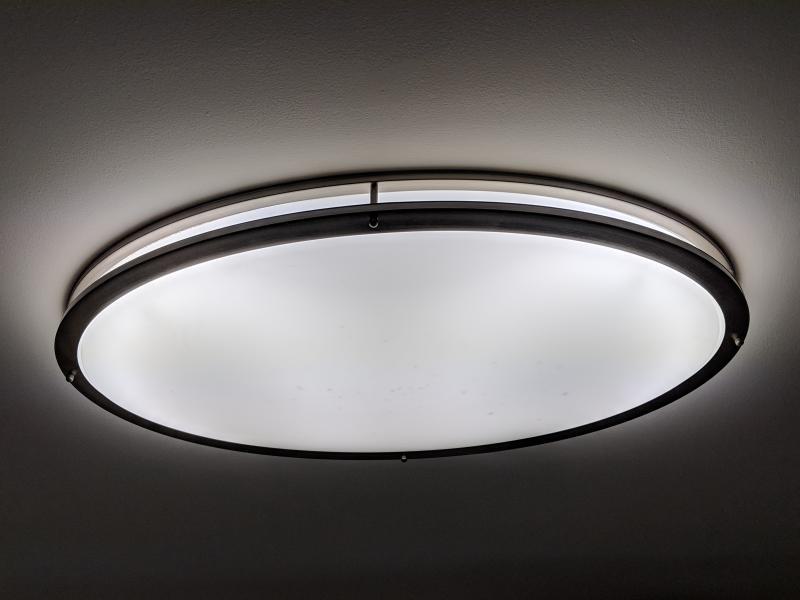
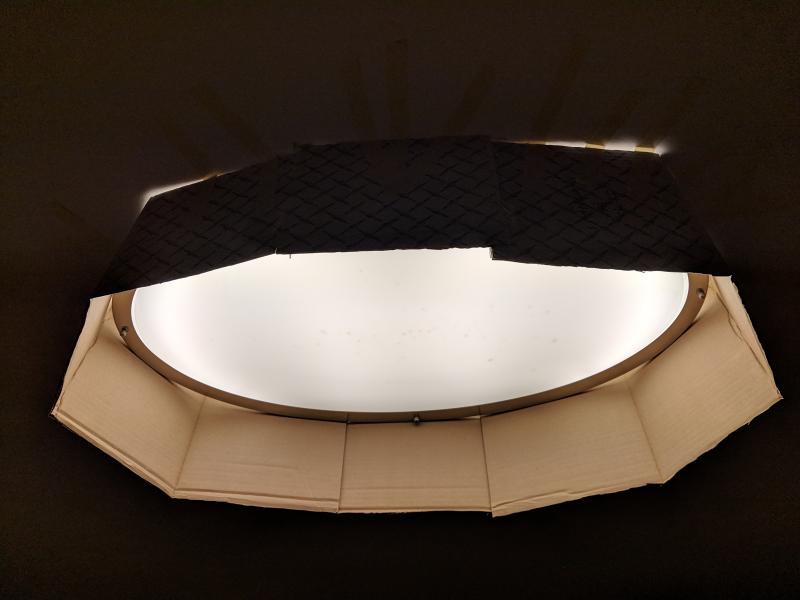
Day 7
The seventh and final light source is a 60 Watt incandescent bulb sitting on my desk. The illumination above the lamp was 28 lx before the modification and 11 lx after.
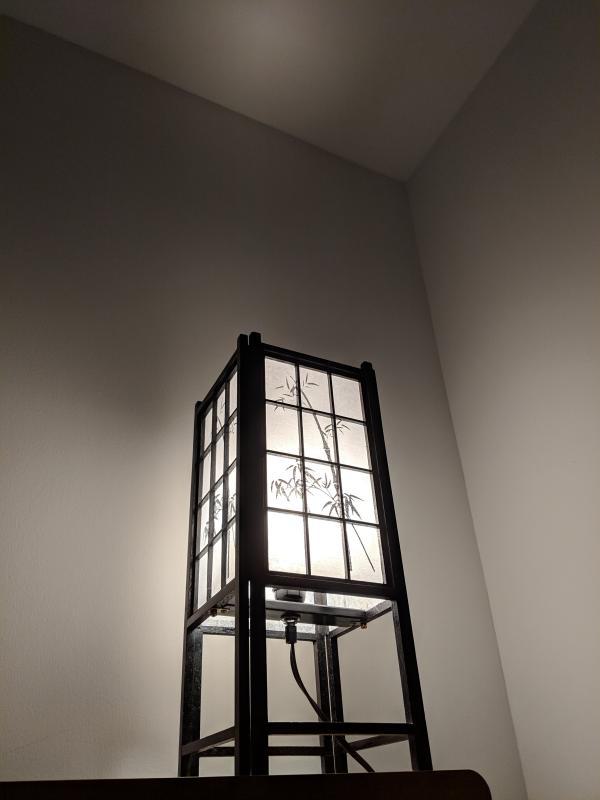
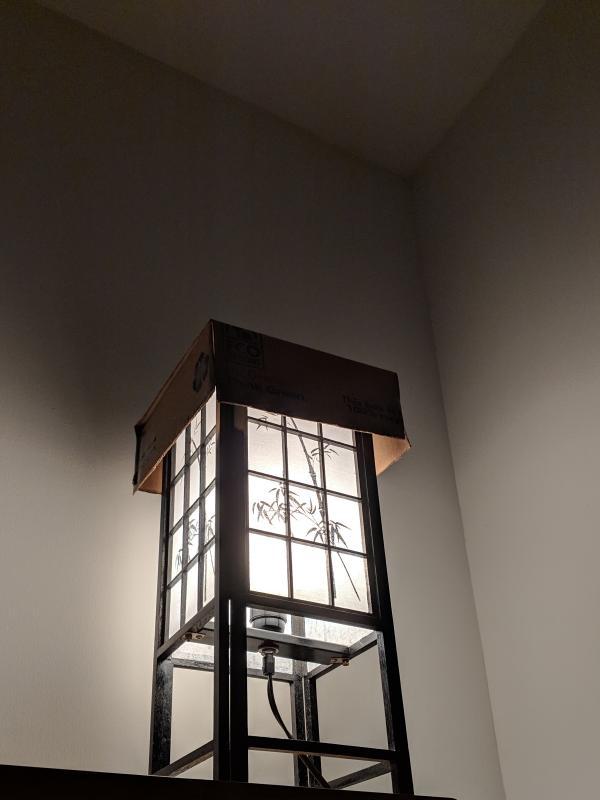
All of the modified light fixtures remained modified for the remainder of the 7 day period. None of them prevented me from living my life in my apartment and none were more than a minor inconvenience. It really was a non-issue.
For all but one light I was able to reduce the ceiling illumination by at least 80-90%. This is encouraging and is more than I expected. It suggests that proper design of outdoor lighting can significantly reduce a light source's contribution to light pollution without a lot of effort.
Light Pollution Expert, Gregory Dobler
This past week I met with Gregory Dobler, an astrophysicist and data scientist working in NYU's Center for Urban Science and Progress. He is the director of the Urban Observatory that is collecting detailed light measurements from NYC light sources. His team analyzes the data in similar ways to what an astrophysicist would do with celestial observations.
Here are some highlights from that conversation.
-
Light Pollution negatively affects the world in the following ways:
Loss of enjoyment of the night sky
Limits astronomers' access to stars
Ecology problems and bird deaths
Human health impacts such as phase shifts of circadian rhythms and cancer
By performing a spectral analysis of nighttime city lights they were able to assemble temporal data of when residential lights were turned on and off each night. This data perfectly lined up with data from a Jawbone blog post showing the sleep-wake cycles of Jawbone users.
-
The hypothesized "rebound effect" of lighting predicts that cheaper LED lighting will result in people using it more and increasing light pollution. Current research aims to prove that this effect is real.
This is Economics 101
Current methods to fight the rebound effect employed by utility companies are fliers encouraging people to use less energy and financial discounts for large buildings
-
Noise is understood to be a problem and there are laws prohibiting excess noise. However, there are no NY laws regulating light pollution.
If someone is polluting the night sky there is nothing anybody can do to stop them
Street lighting is regulated by the Department of Transportation
There is little scientific literature tying light pollution to harm but it is becoming more well known
The 9-11 Tribute lights provided an opportunity to study how light affects birds. Migrating birds will alter their path and get trapped in the light. If allowed to continue they will die.
-
City officials do not recognize light pollution as a problem and will question why you live in the city if you don't like light
"If you turn off the lights in Times Square, you will lose Times Square"
The National Audubon Society recently launched a Light Pollution Campaign and will be a good source of further information
There is no clear relationship between lighting and crime. It has been shown that sparse lighting is worse than no lighting or full lighting.
I learned many details about how their data is collected and analyzed. Their observatory generates 3 TB of data night. Their data is analyzed with C++ and Python code.
This was a great conversation and I am grateful for his time. I now have many new ideas for further research. In addition, there is one clear leverage point that must be addressed if my project is to bring about any kind of actual change. Light Pollution is not seen as a real problem, and until that changes, no progress will be made reducing light pollution. Of course humankind has a reputation for ignoring real problems, but getting people to at least recognize light pollution as an actual problem is still going to be a necessary first step.
Comments